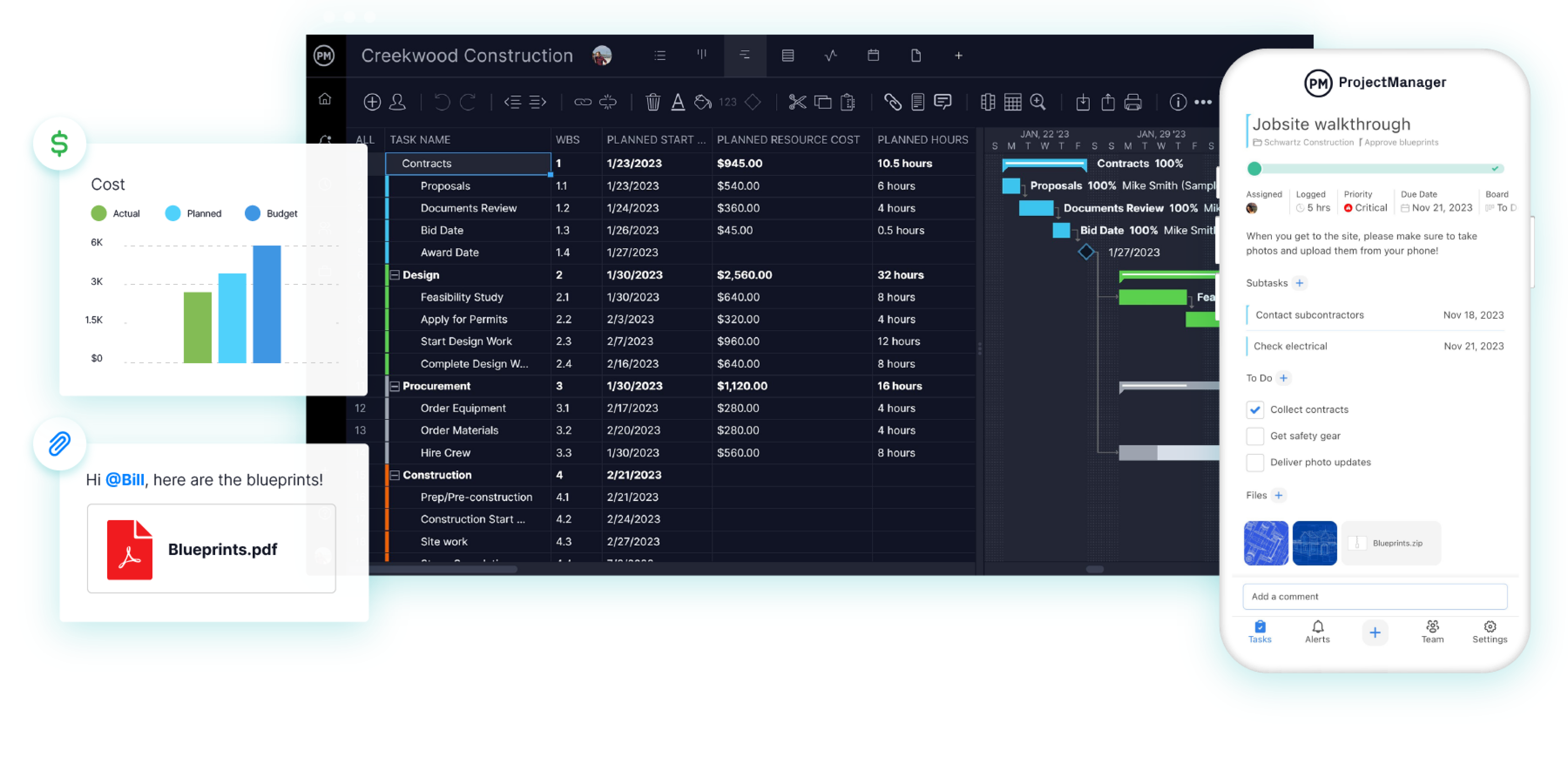Customized Building And Construction Administration Software: Optimizing Source Allotment and Budgeting Methods
In the world of contemporary building and construction management, the value of customized software application solutions can not be overstated. These sophisticated devices provide a nuanced approach to optimizing source allowance and budgeting methods, necessary elements for successful task execution. By diving right into the complexities of how such software can boost resource allocation approaches and fine-tune budget optimization methods, a clear pathway towards heightened task effectiveness arises. In this digital age where precision and effectiveness reign supreme, discovering the effect of customized building monitoring software application on these vital elements uncovers a realm of possibilities that might form the future of the market.
Benefits of Tailored Software Application Solutions
Customized software program remedies supply a myriad of benefits to building administration firms looking for to boost effectiveness and improve operations. By customizing software program options to attend to project management, organizing, budgeting, and source allotment, companies can maximize their process and achieve greater performance.
One more benefit of customized software application solutions is the capacity to supply real-time insights and analytics. Building and construction management companies can take advantage of data-driven decision-making to keep track of task development, identify traffic jams, and make modifications promptly. This positive method boosts job outcomes and aids firms remain on track with timelines and budgets.

Improved Source Allotment Techniques
Implementing effective source allotment techniques is crucial for building and construction management firms to maximize project results and maximize efficiency. Improved source allocation techniques entail purposefully assigning workers, devices, and materials to certain tasks to make certain optimum usage of resources. One crucial aspect of enhanced source appropriation is the ability to accurately anticipate task needs and allocate sources accordingly. By leveraging building and construction administration software program that offers real-time tracking and reporting features, firms can dynamically change allotments as job requires progress, causing boosted performance and cost-effectiveness.
Additionally, boosted source allotment techniques enable building and construction companies to identify and address possible bottlenecks or source restrictions proactively. By conducting normal evaluations you could try these out of resource application and performance metrics, managers can make data-driven decisions to rearrange resources properly and stop delays. This aggressive method not just improves task timelines however also lessens the risk of spending plan overruns because of ineffective resource appropriation.
Budget Plan Optimization Strategies
To attain ideal financial performance in building and construction jobs, effective spending plan optimization methods play a critical duty in making sure cost control and task success. One crucial technique is the facility of a comprehensive task budget plan that assigns sources based on concern and critical demands. By integrating these spending plan optimization methods right into building monitoring software application, project stakeholders can boost financial preparation, resource allowance, and overall budget plan monitoring to drive job success and productivity.

Effect On Job Efficiency
Maximizing construction monitoring software application can significantly improve project effectiveness by streamlining communication, boosting partnership, and promoting data-driven decision-making. By streamlining task information, stakeholders can conveniently access real-time updates, decreasing hold-ups brought on by miscommunication or out-of-date information. Enhanced partnership attributes enable staff member to work with each other seamlessly, no matter their physical place, cultivating a much more cohesive and effective work atmosphere. Furthermore, construction management software application can provide beneficial understandings via data analytics, enabling task managers to make informed decisions swiftly and properly.
In addition, the automation of regular jobs such as scheduling, spending plan monitoring, and source allocation can free up useful time for task groups to concentrate on vital activities, ultimately speeding up task distribution. The capacity to keep an eye on job development in real-time and identify possible traffic jams allows positive problem-solving, preventing concerns from rising and triggering delays. Overall, the impact of customized building management software on task effectiveness is undeniable, supplying an affordable advantage by maximizing process and taking full advantage of productivity.
Future Trends in Building And Construction Software Application
As the construction sector proceeds to develop, advancements in modern technology are shaping the future landscape of building and construction software application remedies. One considerable trend coming up is the increasing combination of artificial knowledge (AI) and artificial intelligence capabilities in construction software. These innovations have the potential to reinvent just how building tasks are managed by allowing anticipating analytics, automated decision-making processes, and enhanced task insights.
One more future look these up fad in construction software application is the growing emphasis on cloud-based options. Cloud modern technology provides boosted adaptability, scalability, and accessibility for building groups, enabling real-time collaboration and data sharing throughout project stakeholders. This change in the direction of cloud-based software is expected to enhance project effectiveness, enhance interaction, and boost overall project results.
Moreover, the surge of Structure Details Modeling (BIM) is anticipated to proceed shaping the construction software landscape. BIM software application assists in 3D modeling, visualization, and information monitoring, bring about boosted task coordination, reduced errors, and improved project outcomes. Welcoming these future fads in building and construction software program will certainly be critical for firms looking to remain affordable and drive technology in the sector.
Conclusion
In conclusion, customized building management software supplies many benefits such as boosted resource allocation approaches and budget plan optimization this post techniques. This software has a considerable effect on task effectiveness by improving procedures and enhancing total performance (australian construction software). As technology proceeds to advance, future patterns in construction software program are expected to additional optimize source allocation and budgeting methods for construction projects